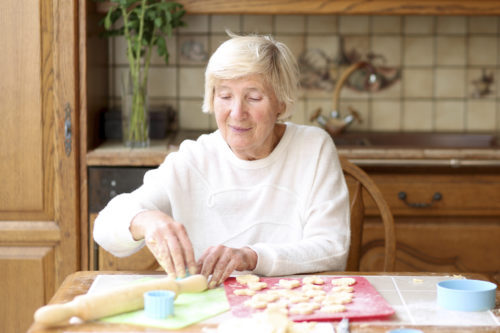7 Tips for a Kitchen That Ages Well
March 07, 2017While some folks are refacing their kitchens for resale, more and more homeowners are upgrading their kitchens for the long haul. With thoughtful consideration at the design stage of kitchen remodeling, a few basic design choices can go a long way towards making your kitchen support your long-term goals.
“Aging in place” is a common term for planning to spend retirement and senior years in your own residence as well as maintaining as much independence as possible during that time. Careful kitchen planning can support independence in your senior years while being a pleasure to use today. You’ll notice than many of these recommendations are good for people of any age.
Here’s 7 things to keep in mind:
Reduce bending and reaching – While cabinet organizers, optimizers and other add-ons are perfect for keeping your goods accessible (and covered in another post), more than storage needs to be simplified. Move electrical outlets to within arm’s reach, either under the upper cabinets or incorporated into the backsplash. Faucets that are hands free or single-lever reduce reaching, and a pull-out sprayer puts water exactly where it’s needed.
Leave space for a wheelchair (or just a chair). There are two places to make some extra leg room; walkways and work stations.
Even a short time in a wheelchair healing a small injury can be a major drag if you can’t fit into your kitchen! Be sure to avoid creating narrow spaces and consider widening existing walkways for increased accessibility. 42-48 inches should be wide enough for wheelchairs, and will keep your kitchen from feeling crowded. Don’t forget to make sure your doorways are wide enough too!

Prolonged standing can be tiring, so create workable rest areas into your kitchen. An area of countertop with open space under it can be a kitchen desk for now, while making for an excellent spot for seated cooking by older guests or your future self. A breakfast bar or eating nook can also serve this function.
Reduce falls. Keep flooring options slip-resistant and leave sturdy ledges wherever you can. Floor mats and small rugs are also notorious for causing falls, so utilize sturdy, attractive flooring that doesn’t need their protection or decoration.
Keep cabinet contents easy to find/remember – Glass doors elegantly let you know exactly where their contents are, cutting down on moments of confusion for those who have memory issues or are simply forgetful.
Out of the light, Out of mind – Lighting, throughout the kitchen and inside areas like cabinets and pantries, makes a world of difference for anyone but especially for senior homeowners. Consider rocker-type light switches or even motion detecting light switches for easy use.
Easy to use, Easy to Reach Appliances – Choose appliances that have clear, easy-to-read displays, with all controls and dials on the front. Consider a drawer-style dishwasher, since their convenience for loading and unloading is remarkably easier to use than the traditional models. If those aren’t a good match, consider elevating the dishwasher to make it easier to load and unload. Keep your microwave on the countertop or at cabinet height, not lofted over the stove. Drawer-style microwaves free up counter space and make for a very easy transition to and from the counter, which limits spills. Similarly, wall ovens allow for easy baking with little back strain.
Helpful Hardware – Lever handles and D-style drawer pulls are comfortable and sturdy grasping points that can be used with ease. Sleeker and more decorative knobs may be attractive, but become less and less usable as time goes on. There are a lot of options in the world of hardware, so chances are high there’s a set that is your perfect blend of looks and usability.
And there you have it, that’s 7 design steps for a kitchen that will age gracefully. If you’re ready to get started on your own kitchen, drop us a line!







